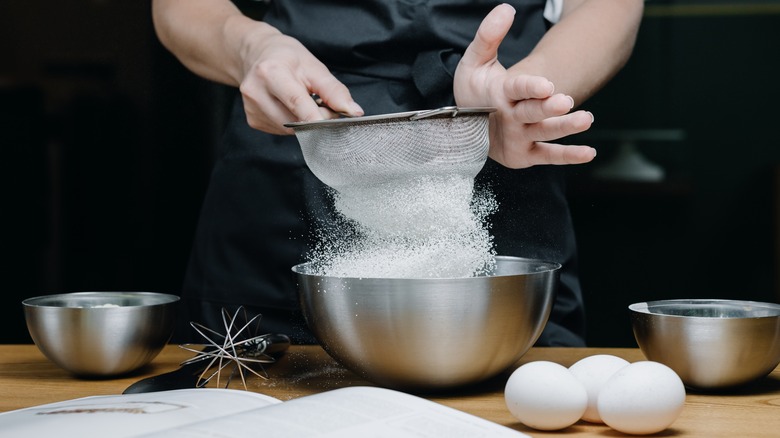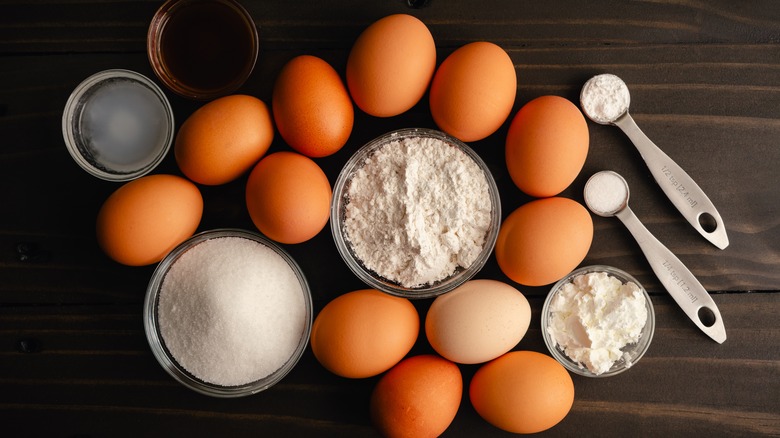Why Sifting Your Flour Twice Is Key When Baking Angel Food Cake
Angel food cake is synonymous with a light and airy texture, and its short ingredients list of just egg whites, sugar, and cake flour has lots to do with it. But there's more within the method than within its members. Since angel food cake lacks the reinforcement of butter and fats, each ingredient is specially treated in a way that bolsters the cake's final texture. There's a right way to whip egg whites for angel food cake, sugar is best added slowly, and when it comes to flour, you better sift it twice.
Sifting flour is not just a routine step for the sake of formality, although it can certainly feel like it. This crucial step helps remove impurities from flour, smoothes out any lumps, and aerates it. In the case of angel food cake, its extremely light batter can benefit from impurity-free flour that doesn't weigh it down. And since whipped egg whites underpin the structure of angel food cake, large clumps may overwhelm the batter and potentially distort the cake's final form.
By all means you want to avoid this, but also want to augment its structure, and that's where sifting twice — or double sifting — is essential. Sifting twice further aerates flour so that your angel food cake is lighter and fluffier. Without sifting at all, chances are your cake will come out dense because of the flour remaining compact. By double sifting, you continue adding air after removing clumps, hence adding size. The difference is clear, as shown by a cup of sifted flour weighing less than that of unsifted flour.
How to properly measure sifted flour
But even while holding the secrets to a voluminous angel food cake, you're likely to run into this sifting conundrum: Add 1 cup sifted flour, (not 1 cup flour, sifted). If you come across this in your angel food cake recipe, bear in mind that "sifted flour" requires you to sift first before you measure, while "flour, sifted" requires you to measure before sifting. It's pretty easy to remember if you follow the placement of "sifted" in each scenario, performing the action first or last according to its position.
This differentiation in grammar is crucial, since, as mentioned before, sifting flour alters its weight. Sifting provides a more accurate measurement because the flour is free from impurities and lumps, so it's most likely that the recipe accounts for this difference within its chosen use of grammar. Mixing up these two methods leads to either including more flour than necessary in your recipe, or less than intended.
It's common to find one or the other method included in a recipe for angel food cake. The bottom line is to follow the recipe and sift twice in either scenario. That said, our recipe for a light and fluffy angel food cake offers excellent guidance. It provides step-by-step instructions, including how to do the second sift directly over the bowl of whipped egg whites — a tip you can now add to our numerous ways to make the best angel food cake.

